As I wrote the other week, Ko Muk’s main village backs onto a working beach lined with a gaggle of beach bars. The beach is no great chop, but the bars are a comfortable spot to while away the late afternoon and catch the sunset’s shadow. In the distance to the south, lies the rising hills of Ko Libong.
Ko Libong off the starboard bow. Photo: Stuart McDonald.
Libong, like Ko Sukorn further south, is a bit of an anomaly for the area. There have been bungalows on both islands for decades, but they never took off in the way Ko Muk, Ko Ngai or Ko Kradan did. Instead they’ve rolled along, very much on island time, neither with more than a handful of places to stay.
Missed the earlier entries?
Like Ko Muk, Ko Libong is a living island. Easily the largest of the islands in Trang province, it is home to a few villages and tourism is an afterthought. It swaps the white or yellow sand beaches of its more popular neighbours for golden sand. The interior is forest and vast rubber plantations. Perfectly straight rows of trunks, each with a tapping bowl attached, are hypnotising.
Island transport. Photo: Stuart McDonald.
All Libong’s resorts are gathered within walking distance of one another, on a bump on the island’s west coast. I’m not sure why this is the case, as the island has plenty of beaches, but for whatever reason, this patch of real estate is out of sight and out of mind for most of the island’s inhabitants.
It takes us a little over an hour on the longtail from Ko Muk to get within spitting distance of the island. We hoped to pull up on the resort beach, but the boatman explains because it is low tide, we need to go around to Ban Phrao, a small village set on an estuary. We can get a ride across the island from there he says.
More functional than fancy. Photo: Stuart McDonald.
We leave the deep waters behind and skirt over a wide sandbar, the water shifting from a deep blue to translucent. Below us sea grass fields dot the white sand then we cruise into the river, our prow sinking as the boatman eases back, and we pull up at a ramshackle pier.
Ko Libong sees more Thai tourists than foreigners, but all come for the dugongs which the island is famous for. By the pier, the signage of the few shops selling dugong key rings and pre–packaged snacks are all in Thai. The smiles though are universal and we pile into a motorbike with a sidecar attached for the run across the island.
Another day at the office. Photo: Stuart McDonald.
It is about a thirty minute drive. The weather, clear as a bell and well warm, the shadows of the trees take some of the bite out of the heat. We go over a small rise, the bike groaning with its cargo, and then we pull up at our digs, Libong Beach Resort.
It is a large, but old school place. Spread over a vast beachfront block, the elevated bungalows are spaced out and all have a beach view. We’ve a family bungalow at one extreme of the resort, with a large deck and trees perfectly spaced for our hammocks. The room won’t be in Vogue Decor anytime soon, but aside from having a power plug near the roof, it all works well.
Time for a light lunch. Photo: Stuart McDonald.
The boatman wasn’t joking when he said it was low tide. Out front there’s a golden sand beach, but beyond the sand a scrappy exposed reef. The waters beyond it are calm, but no swimming till the tide comes in. We relax and grab a lazy lunch at the restaurant then walk some of the beach. Despite being between Christmas and New Year, the resort is not busy at all. There are perhaps two dozen guests spread across the three resorts that sit near each other.
The vibe is very “island time”. In no time at all, we’ve run out of things to do, but the resort has anticipated this. There’s hammocks and lazy chairs, some under vast shade trees. A massage sala by the sand has a local woman giving a guest a work over. There’s no music or loud voices. Just the light breeze and the occasional longtail in the distance. We throw a ball, read a bit, put our feet up and watch the water—in the distance we can see both Ko Muk and Ko Kradan.
Blood pressure dropping. Photo: Stuart McDonald.
Later, as the sea runs in, slowly submerging the reef, the sun starts to sink and the light show begins. It is classic Andaman Sea stuff, with not a cloud in the sky. The sun plummets behind a small islet, and the sky transitions from a deep blue to purple, then a fiery orange. Last is the deep red before we plunge into darkness.
The beach lights up, but not in a beach party way, with fairy lights daisy–chained between a few of the trees. By the two small and sedate beach bars, sun–kissed bodies cluster, murmuring amongst a soft drift of tunes.
Pesky islet. Photo: Stuart McDonald.
We’ve only got a few days here and I’m already regretting not allowing a week. Tomorrow, to the dugongs.

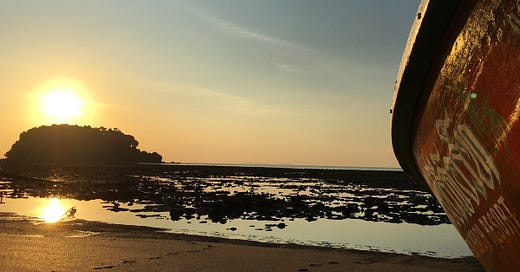


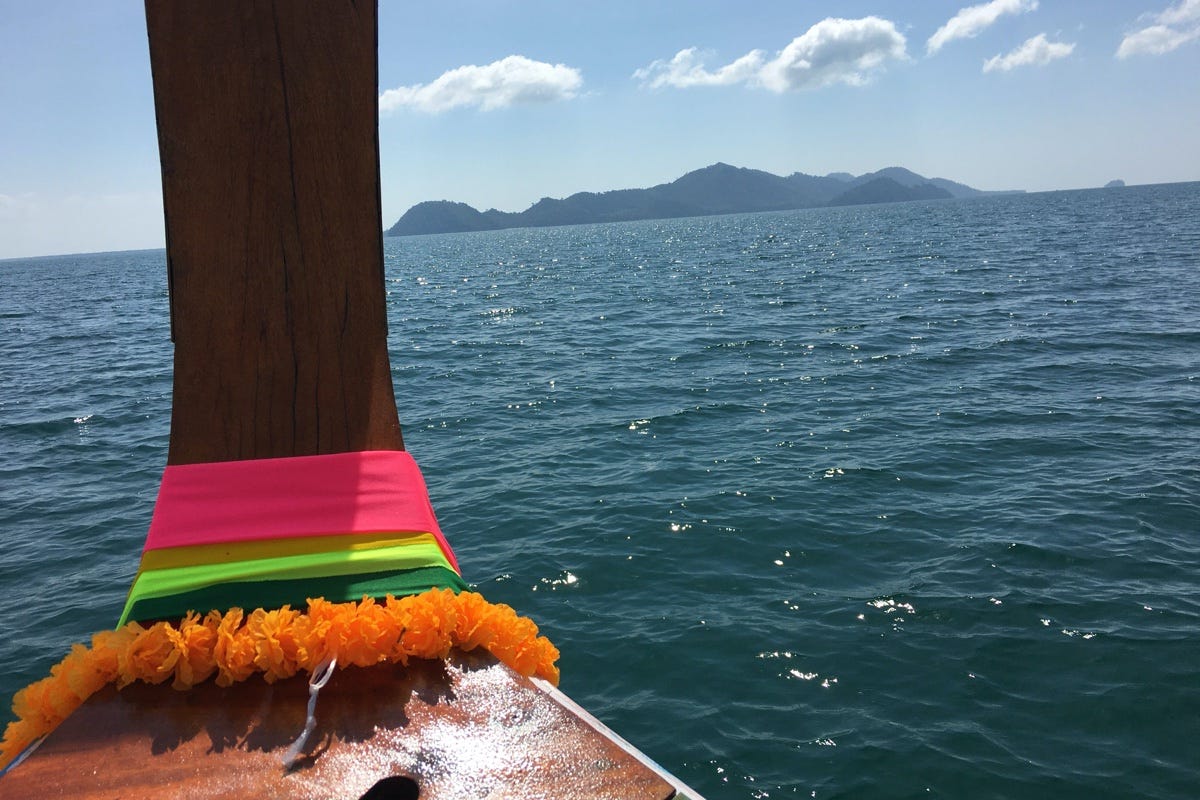
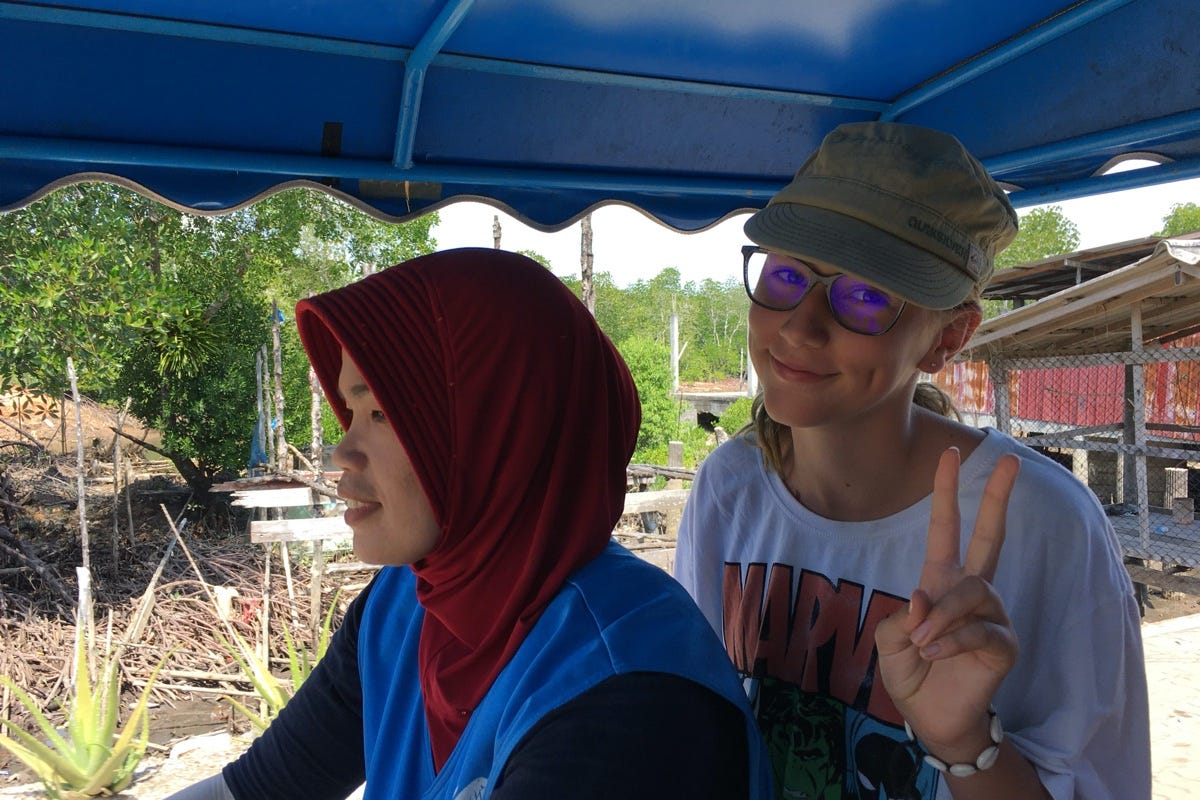

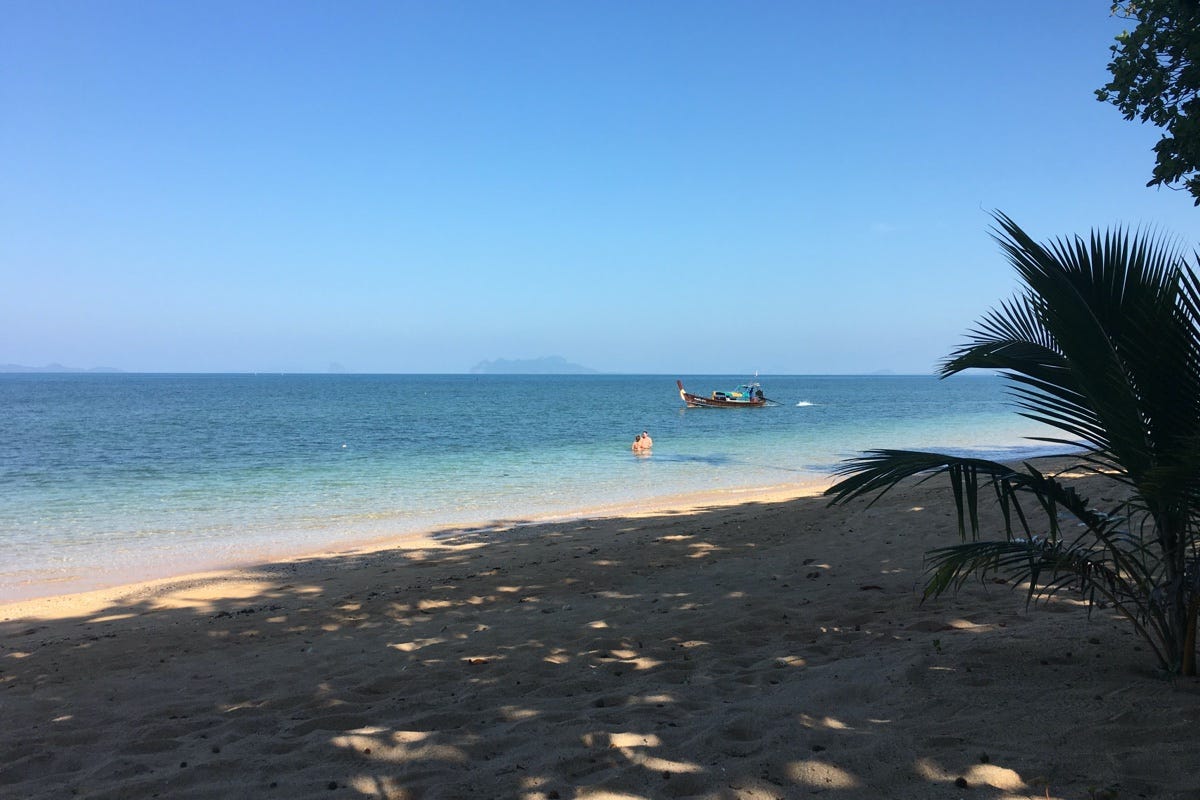
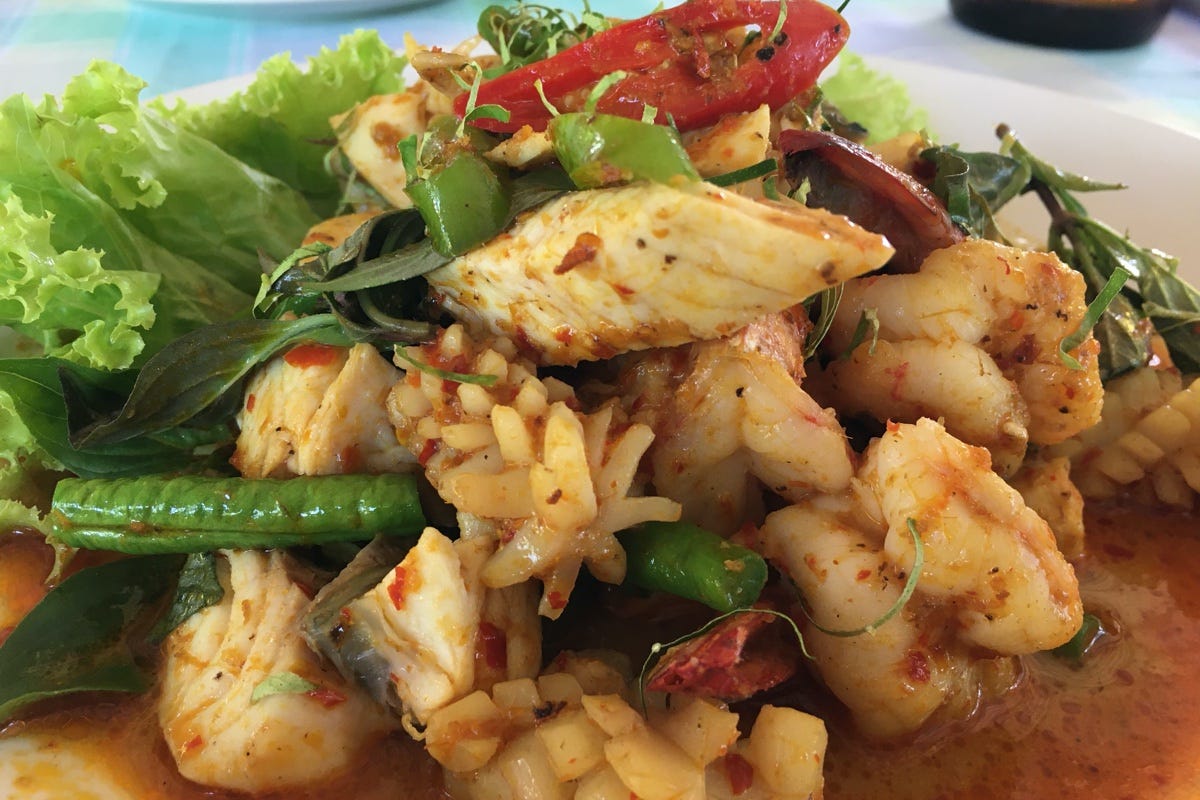
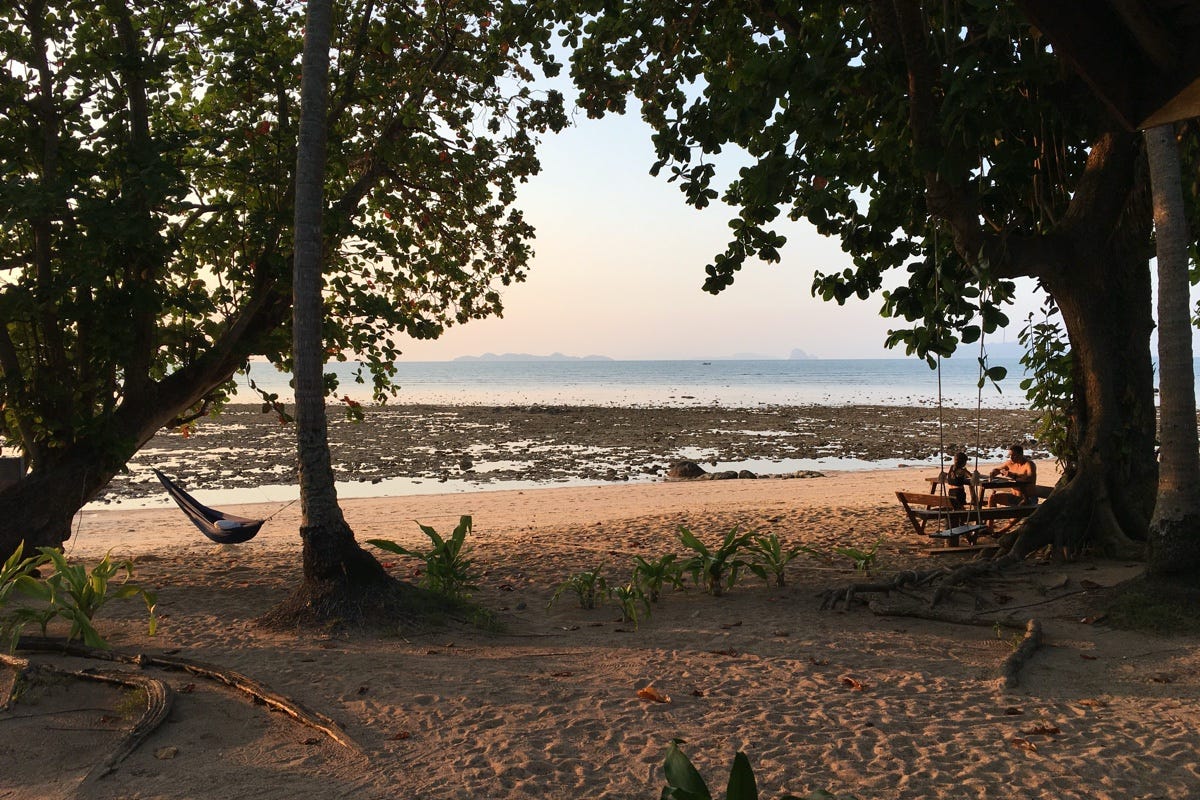










Share this post